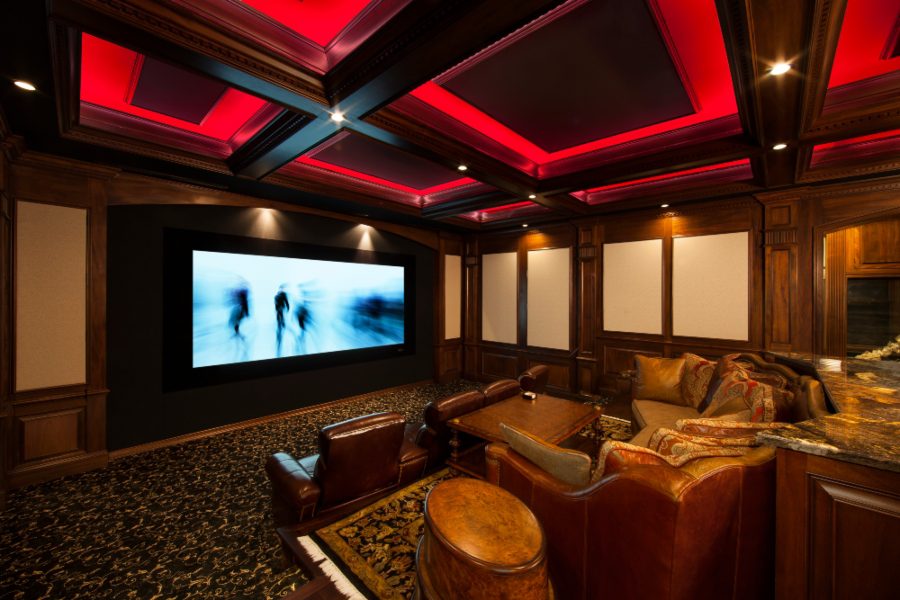
Designer: Dennis Erskine | Erskine Group, Inc.
Location: Based in Colorado, clients through North America and the Caribbean
Website: erskine-group.com
Years designing theaters: More than 20
Number of theaters designed: 120+
Services provided: We are a design/build organization. We provide the design, construction blueprints; we collaborate with the client onsite and virtually, and we provide construction, installation and calibration.
Do you have a signature design: I don’t know that we have a “signature” design. Over the years we’ve had some design elements strike some’s fancy, but they are all pretty much bespoke.
I believe compared to most other designers, our construction prints/design are tedious in the construction, HVAC, electrical, sound isolation related details … of course the lipstick (interior design) is generally very striking. We don’t just design a layout of where stuff goes, we design the entire environment. We’re not only respected for our interiors but the audio, video, and build quality of our projects.
Why should integrators work with theater designers vs. attempting it on their own: Herein lies one of my pet issues. Many out in the field calling themselves theater designers are no more qualified than some of their clients.
Many look at theater design as a placement and interior design project. They are not — they are engineering efforts. You can have great results for five, six and seven figure projects. You can have horrid results for five, six, and seven figure projects as well. A bit of continuing education can go a long way to providing superior results for their clients. I believe many integrators still focus on that thing called the “money seat” and that is not the best plan.
What are the biggest mistakes you see integrators make: The biggest mistakes generally are a failure to properly set expectations. Many of those home theaters fall into disuse way too early in their life cycle. Common complaints are things like, “too loud,” “hot and stuffy,” “can’t understand the dialog,” and “my flat panel has a better picture.” Integrators sell and list of equipment, they need to understand they need to sell an experience and that’s a different design all together.
What is the key to great dedicated theater design: The key does not reside so much in the design. It lies in understanding client expectations and then educating the client on how those expectations can be materialized.

Thoughts on microLED trend vs. projection: I think microLEDs can produce fabulous video quality and very large (often too large) pictures. The downsides currently are they are still very expensive and there is a fundamental audio problem … where’s the center channel? That’s an extremely important, often overlooked component for not only dialogue intelligibility but creating an accurate front sound stage — just try and pan from across the width of the picture without having very audible timbre differences. Solving that problem is a work in progress by at least two manufacturers and we’ll have to see where that all leads.
How has immersive audio impacted modern home theaters: Wow, has it ever. Back to basics, this is not a list of equipment; it is an experience. Immersive audio has had a very significant impact on the resultant experience. The downside is the math (speaker/seating positioning, consistent sound pressure across seating areas, etc.) to get it right. As an important note, immersive audio was first developed for commercial cinemas. When you have 20-foot ceilings (or higher) getting consistent sound across multiple seats is easy. When it’s 8-, 10-, or 12-foot ceilings, however, that’s a different story.







